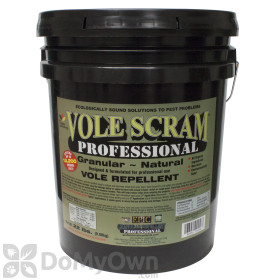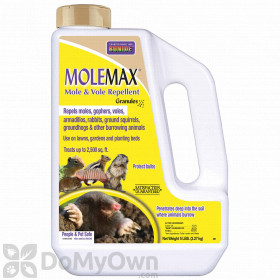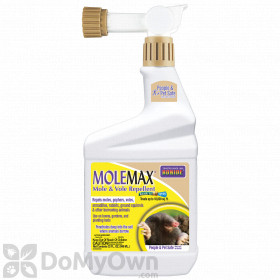We carry several
vole repellent products to help you prevent vole investations. These products contain ingredients that irritate voles, making the treated environment unpleasant. The active ingredients are harmless to the target animals, but use ingredients that will taste or smell bad, or irritate the skin and mucous membranes of the animal. It takes patience and perseverance to use repellents, so keep these tips in mind:
- Repellents are most effective when they're used before you have a vole problem. Consistent preventative applications of repellent products will establish an unpleasant environment for rodents that can help to prevent them moving into your territory.
- The repellent product must be kept fresh so it can be as effective as possible. Replace as often as label allows (usually about every 2 weeks) or after rainfall.
- Repellents can come in liquid or granular formulas. Make sure to follow the directions carefully for the best results.
- Remember that repellents alone are most successful when used in conjunction with other vole prevention methods.








